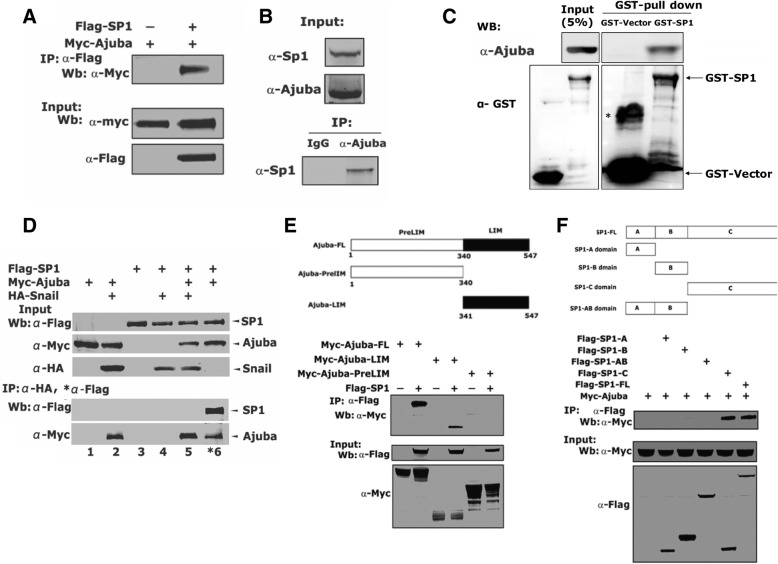Fig. 5.
The LIM region of Ajuba binds to the C-terminal SP1 independent of Snail. a Ajuba interacts with SP1. Lysates from HEK-293 T cells transiently expressing Myc-Ajuba and/or Flag-SP1 were incubated with Flag M2 beads, and the co-eluted proteins were blotted with Myc antibody. b Ajuba interacts with SP1 at endogenous level. Lysates from PanC1 cells were incubated with anti-Ajuba, and the co-eluted proteins were examined using SP1 antibody. Ten percent of total lysates was loaded as Inputs. c GST-SP1 and His-Ajuba was respectively expressed in E. coli BL21, and in vitro binding assay was performed. *non-specific band. d Ajuba/SP1 complex is independent of Snail. Myc-Ajuba, Flag-SP1 and HA-Snail were expressed alone or in combination in 293 T cells and co-IP assays were carried using anti-HA or anti-Flag antibodies. e The LIM domain of Ajuba interacted with Sp1. Lysates prepared from HEK-293 T cells transfected with plasmids encoding Myc-Ajuba and its truncation mutants, together with Flag-SP1 were incubated with anti-Flag M2 beads, and co-eluted proteins were examined by anti-Myc. f C terminal SP1 interacted with Sp1. C terminus of Sp1 contains a conserved DNA binding domain

